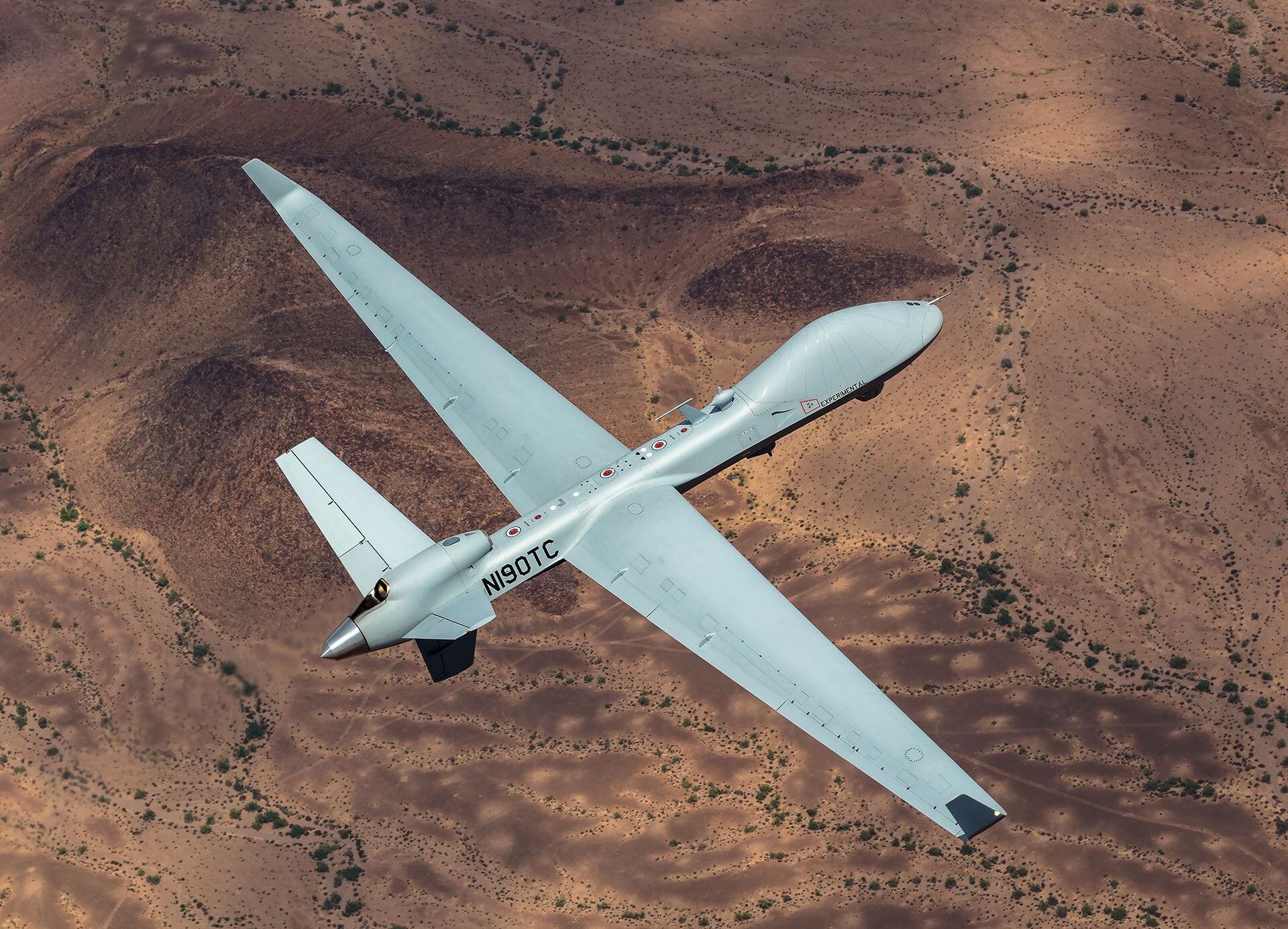COLOGNE, Germany — General Atomics has nabbed a $125 million contract from the United Kingdom to make that country’s Protector military strike drone certifiable to fly alongside civilian traffic, pushing the company’s agenda to be first in Europe with such a system.
The money will help “complete” test and evaluation activities needed to demonstrate all safety features leading up to an eventual certification of the aircraft by British authorities, the company said in a statement.
Pairing drones with civil aviation in the same, unrestricted airspace involves a complex field of still-evolving regulations. In short, unmanned planes must be equipped with sensors and controls — collectively known under the name “detect-and-avoid” — to be able to avert midair collisions just a like a human pilot would.
“This completes another important milestone as we work towards the delivery of Protector to the Royal Air Force (RAF),” General Atomics CEO Linden Blue is quoted as saying in a company statement. “We have completed more than 100 qualification test flights using our two company-owned SkyGuardian.”
The British Royal Air Force is slated to receive the first Protector drones in 2024, according to a service statement released during the DSEI defense exhibit in London last week. Installing a detect-and-avoid package on the aircraft became an explicit objective of the program early this year. General Atomics officials said they are working toward a so-called military-type certification by the British authorities in the summer of 2023.
RELATED

According to General Atomics, the company’s detect-and-avoid system consists of a “due-regard” air-to-air radar and processor, which is integrated with a “Traffic Alert and Collision Avoidance System (TCAS II),” and an “Automatic Dependent Surveillance-Broadcast (ADS-B).” The Protector also will feature all-weather performance with lightning protection, damage tolerance and a de-icing system, the statement reads.
The company hopes the sale of certification-ready drones to the U.K., plus a similar deal with Belgium, will jump-start sales on the continent just as unmanned aviation reaches further into military and everyday life.
While General Atomics believes its previous work with the U.S. Federal Aviation Administration will translate into a tangible advantage, European manufacturers are busy readying their own drones for the challenge.
One industry insider, speaking on condition of anonymity, said there is a trans-Atlantic rift emerging when it comes to the regulatory framework for integrating large military drones into routine air traffic. On one side, companies like General Atomics are pushing toward a unified approach on both sides of the Atlantic, while manufacturers in Europe are circling the wagons to push a uniquely European path that could make it difficult for the Americans to gain a foothold.
Sebastian Sprenger is associate editor for Europe at Defense News, reporting on the state of the defense market in the region, and on U.S.-Europe cooperation and multi-national investments in defense and global security. Previously he served as managing editor for Defense News. He is based in Cologne, Germany.








